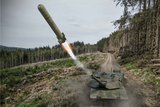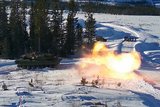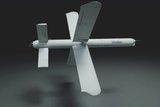Lithuania has ordered MSHORAD systems from Saab under a deal worth approximately SEK1.3 billion (US$123 million) with deliveries to take place take place between 2025 and 2027.
The order is part of a framework agreement between Saab, the Swedish Defence Materiel Administration (FMV) and the Lithuanian Ministry of National Defence which allows Lithuania to place orders for Saab’s mobile short-range air defence missile solution RBS 70 NG.
The company said the order included mobile firing and radar units, command and control system, a training package and the RBS 70 NG trainer. Saab will integrate MSHORAD into Joint Light Tactical Vehicles from Oshkosh Defence before delivery to the customer.
Saab to demonstrate MSHORAD in ‘near future’
Saab kindles international interest with MSHORAD live firing test
Sweden signs with Saab for MSHORAD
The order makes Lithuania the second known customer. In an announcement made in January this year, Saab said it would provide Sweden’s defence forces with MSHORAD systems under a SEK300 million contract signed with the FMV.
The contract was placed in late-2023 with the fulfilment period 2024–26. The systems will be used “to further define Sweden’s future mobile air defence requirements”, according to Saab.
Saab conducted the first live firing tests of MSHORAD system in Sweden in August 2022 in an event attended by 15 potential customers from NATO and non-NATO countries.
During the test, a total of five successful firings were executed — four by day and one at night — with an RBS 70 NG Mobile Firing Unit on a MARS-S330 vehicle against several targets, including a DJI Matrice 300 RTK quadcopter and an elevated AS365 N3 helicopter frame.
The sale to Lithuania may open the door to other countries looking for a mobile air defence system to operate in a CUAS or anti-aircraft role, a concept of operations for which there has been high demand in the region.
RBS 70 Training System
RBS 70 system
Mobile - SHORAD






















